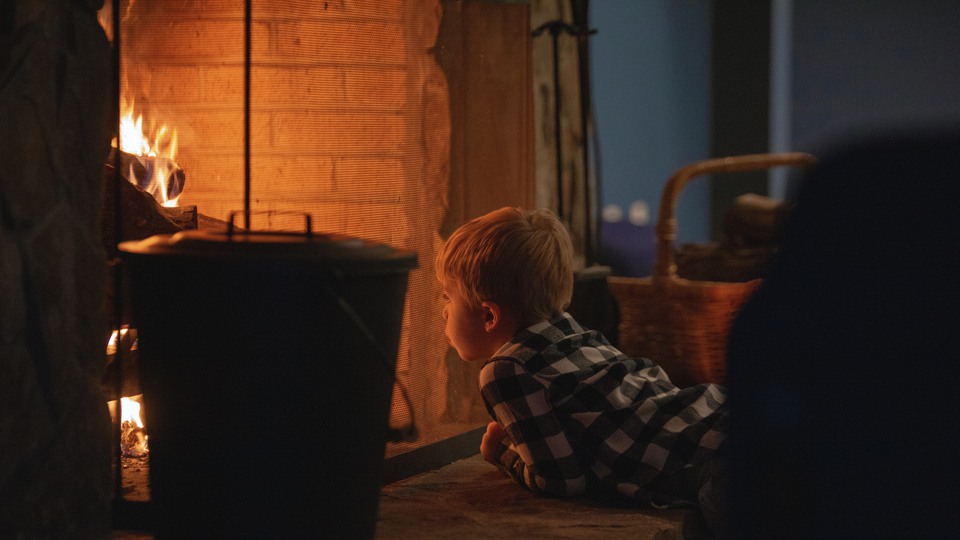
Wood-burning the right way – to reduce health risks
For many, a wood fire is the epitome of home comfort. But the air pollutants, such as particles and soot, emitted as a result of wood-burning affect both human health and the environment. As more people resort to wood-burning due to rising electricity prices, we need more knowledge and information about how to avoid unnecessary air pollution.

Tomas Gustafsson
In Sweden, wood-burning has mainly had positive connotations, as the wood produced in Sweden is considered climate-neutral, i.e. it does not contribute to a net increase in carbon dioxide emissions
, says Tomas Gustafsson, air expert at IVL Swedish Environmental Research Institute
However, small-scale wood-burning emits considerable amounts of air pollutants. The problem mainly arises in densely built-up residential areas. Neighbours are disturbed by smoke and odour, and the air in the area can be full of harmful substances.
Research shows that a large number of fireplaces, or a few old wood-burners, over a limited area can result in considerable emissions in the vicinity. It is therefore important to reflect on how wood-burning can contribute to heating homes without generating health problems for people nearby
, says Tomas Gustafsson.
Choice of wood-burner affects emissions
The amount of air pollution from wood-burning depends on several factors. For example, emissions are affected by the type of fireplace, how it is installed and how the actual burning process is managed. Burning wood in open fireplaces and old stoves risks releasing more of the harmful substances, both indoors and outdoors, whereas modern stoves and furnaces, correctly used, generally emit much lower levels of air pollutants.
The way wood is burned also plays a part. Wood that is too damp generates more emissions of harmful particles than dry wood. Likewise, incomplete combustion, or smouldering, generates unnecessarily high emissions.

Sofie Petersson
Studying the local impact of wood-burning
The Air Group at IVL conducts measurements of air pollution on behalf of organizations including the Swedish Environmental Protection Agency, local government and air quality management associations.
To map the spread of emissions from wood-burning, along with the air concentration levels they generate, dispersion is also calculated. Recently, a group of IVL experts worked together with the Dalarna air quality management association to study the impact of wood-burning in the county. Dispersion model calculations were based on data from local chimney sweeps combined with data from the Swedish Environmental Emissions Data consortium (SMED).
The results of the calculations helped us to assess the impact of home fires in Dalarna county and the problems they cause. The calculations showed that environmental quality standards were generally not breached in the areas studied. However, breaches are likely in direct connection to households heated by wood-burning, with a high annual consumption of firewood
, says IVL air quality expert Sofie Petersson, who worked on the project.

Karin Söderlund
IVL has worked on the problems of wood-burning for many years, in both local and national contexts, as well as in international research projects. A comprehensive study on behalf of the Nordic Council of Ministers specifically compared different types of wood-burners and burning methods.
IVL possesses a unique collective expertise on wood-burning, with experience from working on issues concerning legislation, mapping, measurements, modelling, emissions calculations, analysis of measures and advisory activity. We hope to continue working on issues regarding wood-burning in the future
, says Karin Söderlund, head of the Air Group at IVL.
For more information, contact:
Karin Söderlund, head of IVL's Air Group, tel: 010-7886767, karin.soderlund@ivl.se
What are the problems of wood-burning?
The problems associated with wood-burning mainly arise in densely built-up residential areas. Neighbours are disturbed by smoke and odour, and the air inhaled both by those burning wood and those living nearby may be full of harmful substances which can contribute to cardiovascular problems and lung disease. Wood-burning is in fact responsible for a significant proportion of emissions of certain harmful substances, such as particles (soot), polycyclic aromatic hydrocarbons (PAH) and dioxins. Children and elderly people are particularly vulnerable.
There are guidelines that limit the use of private home fires, and each municipality is responsible for its own guidelines. In addition to municipal guidelines, legal requirements limit the emissions permitted from new wood-burning stoves and furnaces.
